It’s not too late to ‘get on’ the wave!!!
Very soon after the adoption of mobile phones, tablets, and ubiquitous technologies, the ‘workplace pundits’ made a quantum leap and predicted the end of the need for a central workplace. They rationalised, “If emerging technologies allow people to work anywhere, then who needs to maintain the overhead of the traditional ‘bricks and mortar’ place to work?”
As it turns out, the clear majority of workers do. Work, at its essence, is very much a social endeavour. Even people armed with the latest mobile technology still come to the office for two main reasons:
- To connect with other people and exchange ideas and;
- Access technology they can’t carry around in their backpacks.
The ‘office’ has not disappeared, nor is it ever likely to. However, it is evolving into something fundamentally different, driven by a rich dialogue between employer and employee, regarding their respective expectations and mutual ambitions. This new dialogue is premised on mutual respect, and an appreciation that meeting and achieving business success factors, is heavily reliant upon alignment of agendas.
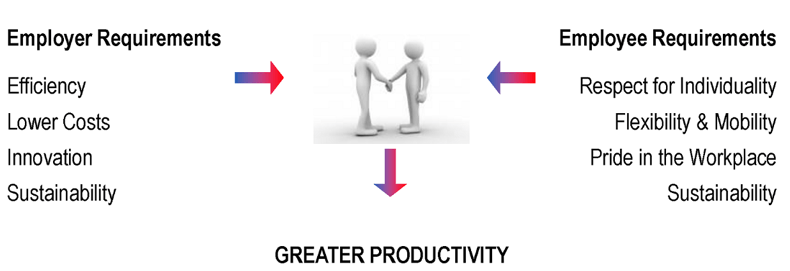
“Employees are ‘turning their backs’ on workplaces that are structured upon uniformity and hierarchy,” Adrian Foung, Design Leader at PCG.
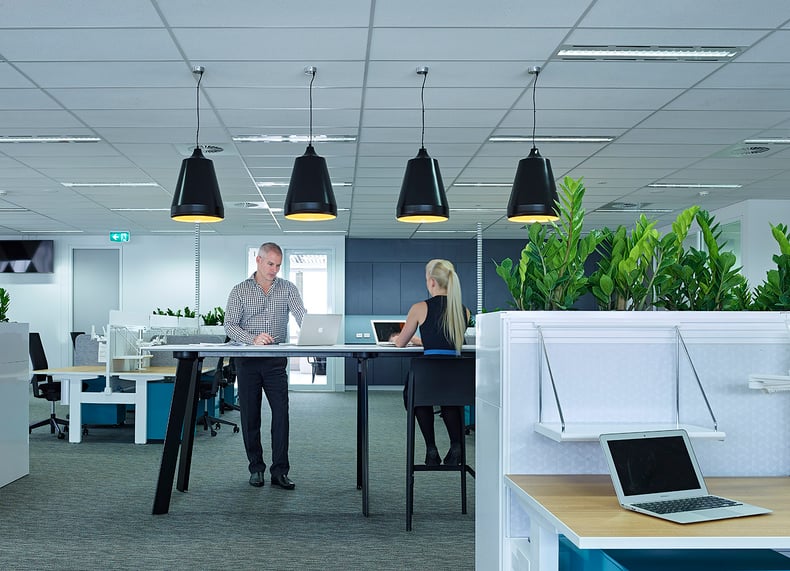
They’re looking for inspiration and creativity at work, as well as enabling technologies that make life easier, instead of more complicated. PCG saw this shift start some 10 years ago. Now we’re experiencing client organisations adopting an “execution neutral” posture at the outset of new workplace projects, allowing the solution to evolve by way of stakeholder engagement and facilitated workplace envisioning sessions, with all employees.
This new “push of enlightenment” is changing the way workplace solutions are procured. Now, cultural and branding identities of the organisation are driving the way buildings are designed, locations selected, lease and lease term selection, all the way through to the material specifications in the workplace.
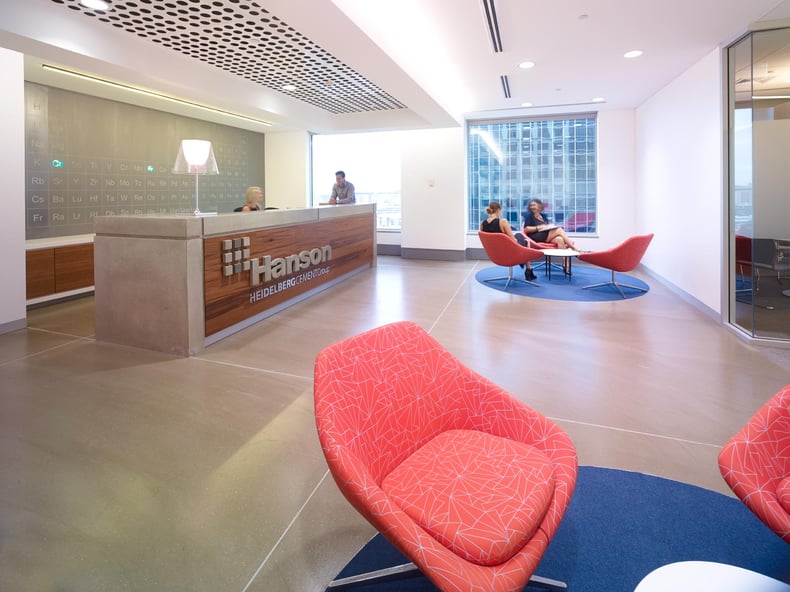
“Within the space of ten years, most of the traditional practices and ways of thinking within the corporate real estate and workplace design sectors have been recalibrated to enable and support the “high-performance workplace”,
Simon Gunnis, Managing Director, PCG.
A Global Phenomenon
Changing attitudes about the workplace emerged in pop culture when Dilbert cartoonist Scott Adams began lampooning the workplace in the 1990’s. Later, the mockumentary television series, “The Office”, signalled a growing global discontent with the mainstream workplace. “The Office” became the symbol for wasting one’s life in bland, non-descript places of work.
In the early 2000s, tech start-ups were some of the first to make radical changes in their workplaces. Communal tables and do-it- yourself design were a necessity to cash-strapped entrepreneurs, but the informality and creativity struck a chord with employees everywhere. Game tables, slides and double decker buses brought an element of playfulness to some workplaces, suggesting that maybe, just maybe, work didn’t have to be a meaningless grind. Perhaps work could include an element of fun!!
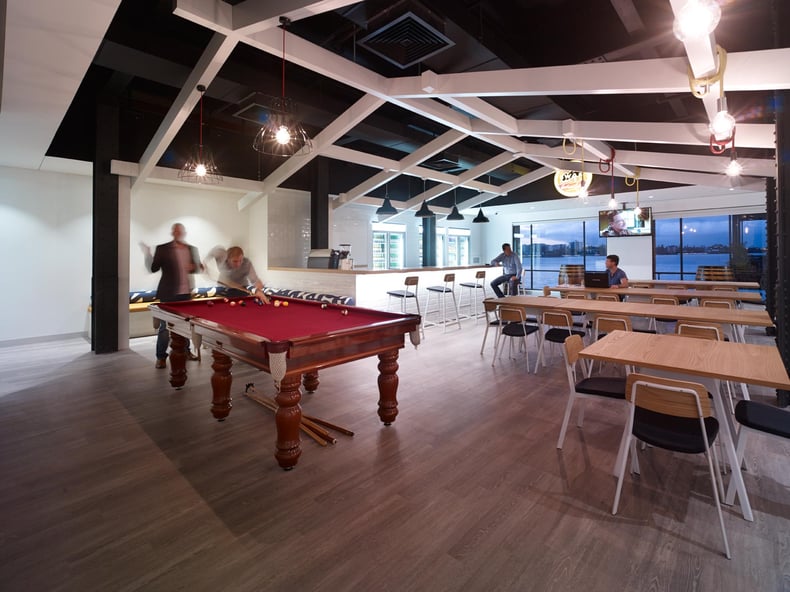
Tech start-ups were an early indication of a greater change. After years of frustration and growing fatigue, over a sea of sameness, employees wanted ‘a voice’, more autonomy, self-expression, and freedom. Emerging technologies offered an escape route. Many people voted with their feet, leaving the office whenever possible to work “on-line”.
At first, it seemed like a good idea. The idea of waving goodbye to the office and working in a cool coffee shop seemed like a worker’s utopia.
Then people started to discover that cushy sofas get uncomfortable and small tables make it tough to spread out your stuff. Remote work proved to be a solution some of the time, but not all the time. Gallup’s State of the American Workplace report found that people who worked remotely 20 percent of the time or less were the most engaged. However, the study also revealed that higher levels of remote work, correlated with higher levels of disengagement. It seems that enthusiasm for remote work, was tempered by the underlying need to seek places that offer emotional, as well as physical comfort—where it was easy to get your work done.
A Cultural Movement
And so, began the renaissance of the workplace environment.
PCG’s own research conducted over the past 10 years, points to the following key drivers accelerating this change:
1. Appreciation of the Different Workstyles Within the Workplace
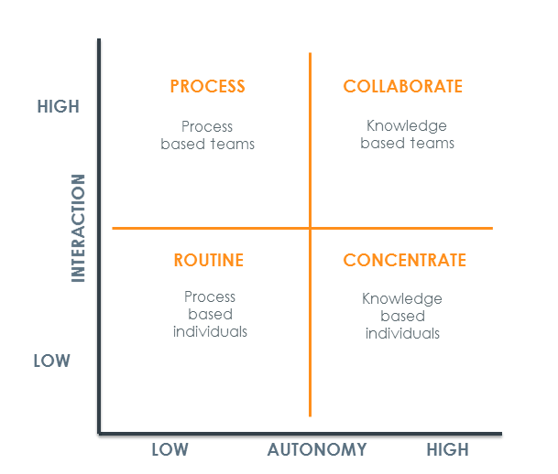
Every employee falls into one, and often up to all four of the above workstyles, subject to the work challenges they encounter throughout their working week and their evolving careers. Suitable settings for these four work styles are as different as the styles themselves. Employees began to demand spaces and resources that allowed them to perform at their best, and organisations sought to empower their staff in response to the demands of their daily challenges and objectives.
2. The War For Talent
An increasingly competitive market has evolved as organisation seek to recruit and retain talented employees. Consequently, the workplace negotiation between employer and employee has been drastically affected by the changing physical and virtual workplace. The onus is on the employer to not only understand the characteristics and goals of employees to realise their full potential, but also that the workplace needs to be a physical manifestation of the contract between employer and the employee, and what they are endeavouring to achieve together. Employers are quickly learning that to retain talent, a workplace must support and enable employee aspirations.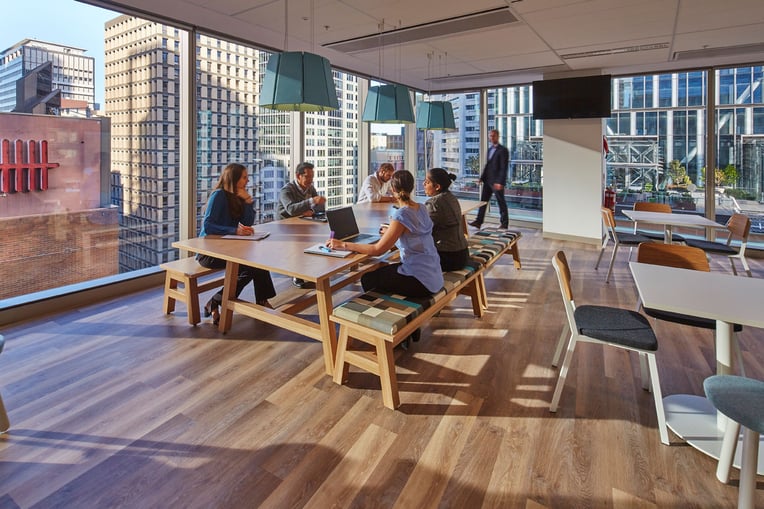
3. Engagement
“60% of employees in Australia are not engaged or involved in their work and workplace”, Gallup tracking, March 2016
Improving connectivity between the organisations’ employees and business practise leaders is essential to performance. This requires engagement of the physical workplace, work process, workplace tools, professional culture, industry trends and best practise.
4. Enabling Technology
Consumer technologies are a game changer for the office. People are accustomed to technology that helps them drive better, manage their home appliances remotely, walk more, sit up straighter or connect more with their friends and family. Then they come to offices where technology largely exists on desktops or mobile devices, and no one has thought about embedding it in the physical environment to help make the work day better. But when it’s thoughtfully integrated in the walls, floors and furniture, technology holds the promise to make the work experience more human centred. As the positive results are realised by leading organisations already making the change, demand has increased for enabling technologies, as it has for flexible workplaces that allow for its integration.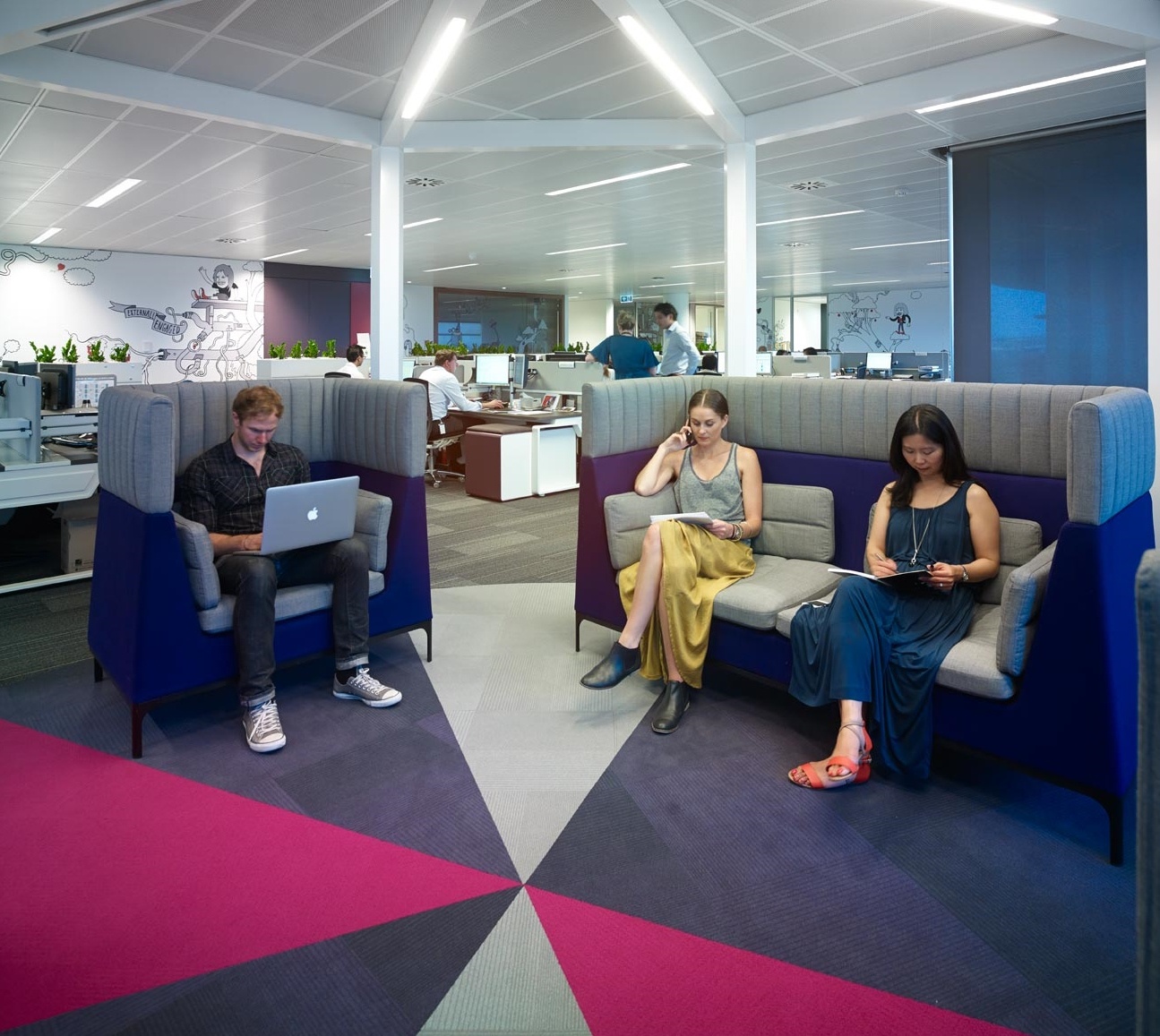
5. Information Exchange
By bringing people from different disciplines and with varied specialties together, organizations today are finding new solutions to all kinds of challenges. Collaboration is driving innovation. Across industry sectors as disparate as Finance to Professional services, interdisciplinary teams have emerged as the pathway to better, faster results.
But cross-functional collaboration is encumbered without the work settings to enable it.
Organisations that are committed to breaking down silos and promoting the cross-pollination of ideas are providing creative spaces, huddle rooms, project areas, lounges, or other communal spaces where teams can gather—where they can ask questions, dissect problems, exchange ideas, and share examples of their own work and initiative.
The best environments are the ones that have a spectrum of work settings within a culture that empowers workers to make those choices. In a consumption-aware society as we are today, people prefer substance over status. Customization enriches choice, enables expression, and reaches out to customers as participants in the decision-making process.
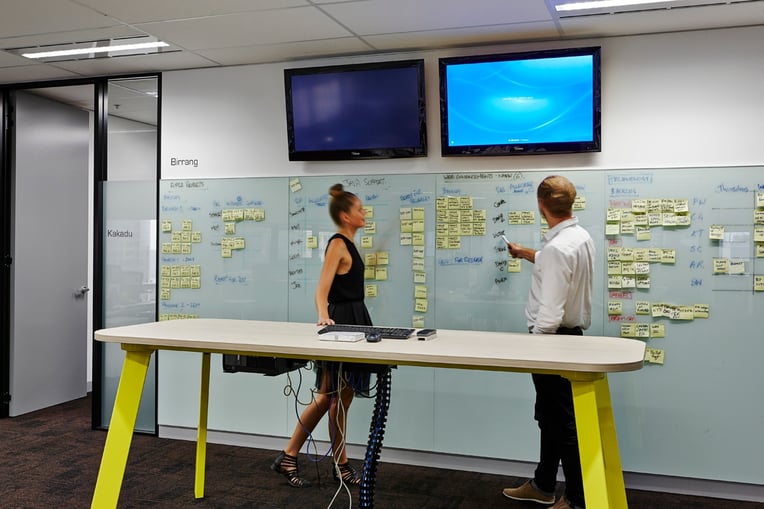
6. Sustainability & Wellbeing
An increased focus on sustainable practices in the workplace design and operations, requires a methodological approach to workplace planning and the application of specific techniques including: green building materials, open layout configurations, efficient circulation patterns, and functional groupings. No longer is access to daylight and air quality a casual consideration, but a key component of a healthy workplace, as is availability to alter work posture throughout the day, through the provision of stand-up desks and or casual seating arrangements.
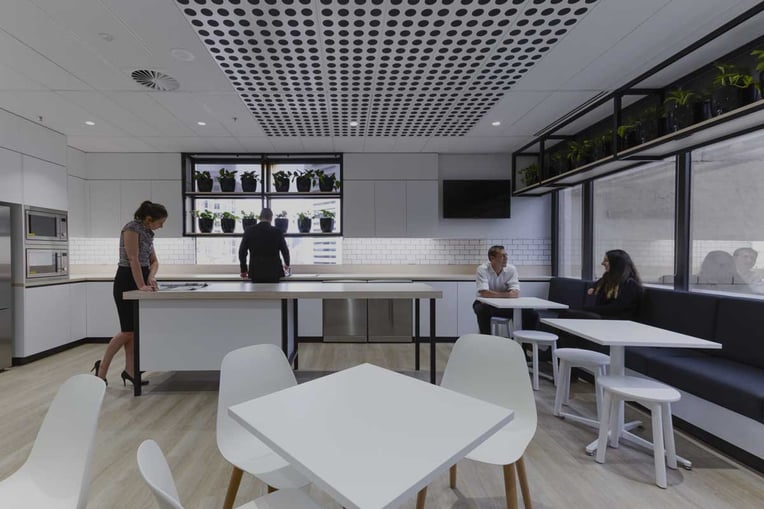
But How Do We Get There?
“The best way to succeed is to start early with the end in mind”
The office renaissance recognizes the critical role human emotion plays in the process of work. Traditionally work has been thought of as a mostly logical process; emotions could influence decision-making in potentially worrisome ways. However, new research, illuminates the connection between emotions and cognition, as well as physical wellbeing, validating the role of emotions in achieving business success. Traditional workplace metrics, such as real estate costs, or increasing productivity, are still important, yet new insights from neuroscience are shedding light on what inspires people to achieve more.
The following diagram illustrates the contributing elements of the high-performance workplace, which relies upon alignment with the objectives and the strategies contributing to the success factors of the business.
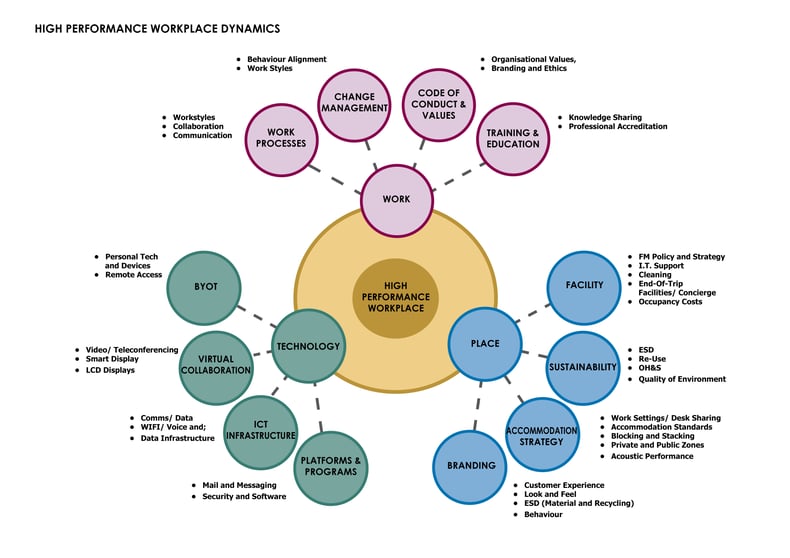
Time is the Nemesis of the Best Laid Plans
Any organisation that intends to be part of the workplace renaissance requires a space that fosters innovation.
We recommend an organisation that occupies say 3000m2 and with 150 – 200 people initiate such a strategy three years ahead of any lease event to implement the necessary activities and obtain appropriate space on competitive terms in their preferred location. Regardless of an agenda to stay or go, a tenant should test the market for alternative premises to obtain an acceptable rent from their existing landlord. Tenants can achieve significant savings of 10 – 20% on the cost of a new lease, by testing the market through a competitive process that includes their existing landlord. These savings can then be applied to fit out and technology that support and trigger the renaissance.
Without competitive tension, it is extremely difficult to negotiate favourable terms. In a market with a limited supply of existing properties, most tenants can only place their existing landlord in a competitive situation, by allowing sufficient lead in time to commit to a new building.
Although lease expiry dates need to be thoroughly considered and evaluated, they should not be the key driver for instigating a Master Plan. A Master Plan focuses on the strategic needs of a business in terms of people, place and process and provides a strategy to realise the agenda of the tenant rather than the supply side proponents. Without such a strategy, it’s likely most projects will end up in one of the three “unchanged” categories as illustrated below. 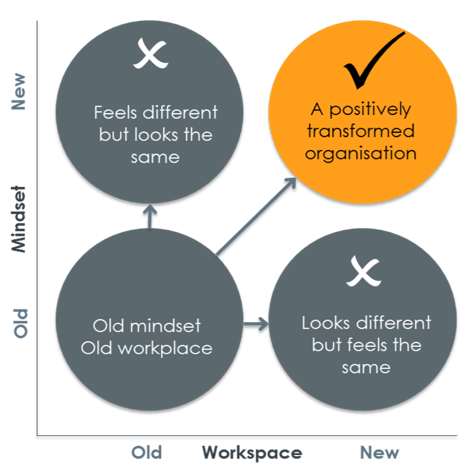
How to Make A Change in Your Workplace
The workplace renaissance is about a lot more than design awards and great project photographs.
“Our clients want employee engagement and ownership, creative self-expression and authenticity. It’s about a lot more than table tennis tables or some bean bags from the flea market. People want to feel a connection to the places where they work, where they can see themselves in the space, versus spaces that are imposed upon them by management." Adrian Foung, PCG
The optimal outcome, a “High Performance Workplace” is heavily reliant upon an enlightened strategy and a balanced contribution of property, design and project management skills”.
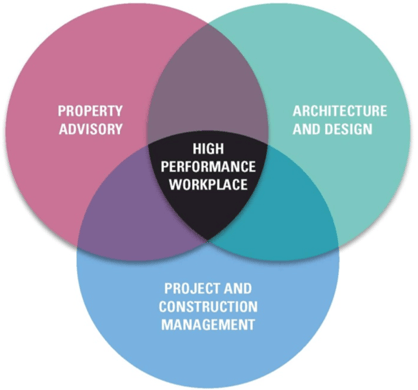 Whilst not all organisations have the capacity to access this full skill set in house, it is possible to outsource. Again, forward planning plays a big part in easing the load. A comprehensive Master Plan can assist in getting your Workplace Renaissance underway.
Whilst not all organisations have the capacity to access this full skill set in house, it is possible to outsource. Again, forward planning plays a big part in easing the load. A comprehensive Master Plan can assist in getting your Workplace Renaissance underway.
Essential elements should be included with your Master Plan to increase the likelihood of success. Our Master Planning brochure can help you identify how to get you started.

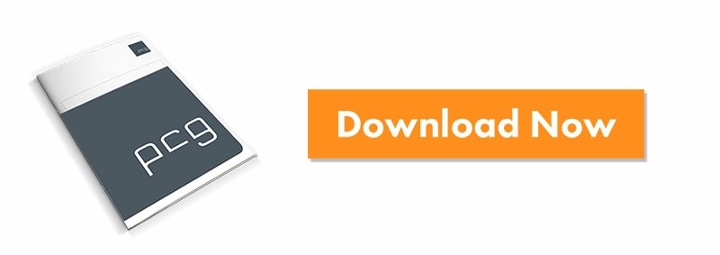


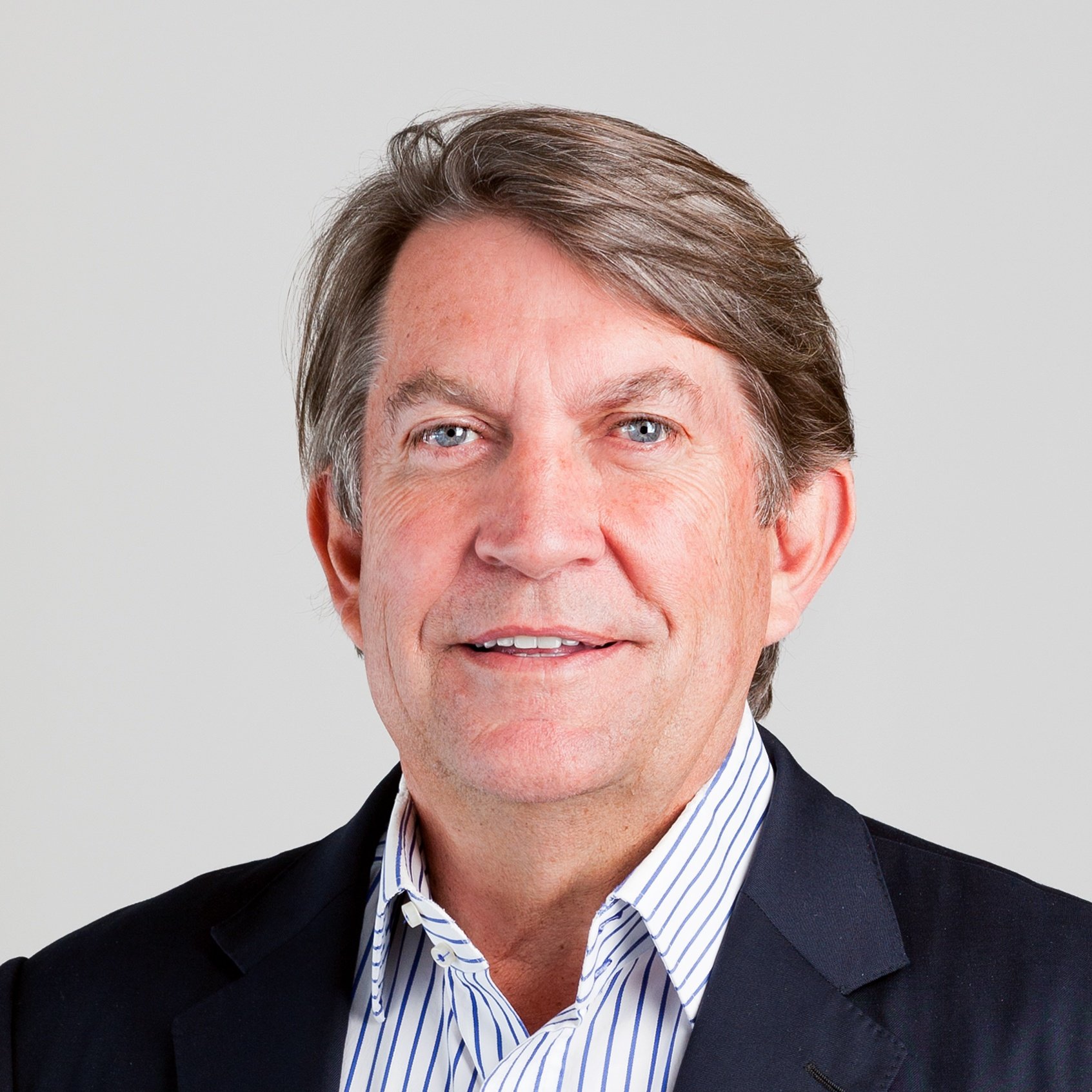


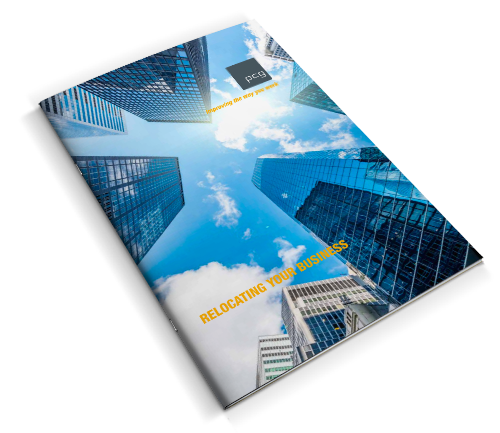

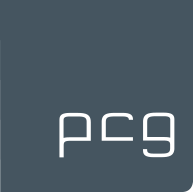
Share your thoughts